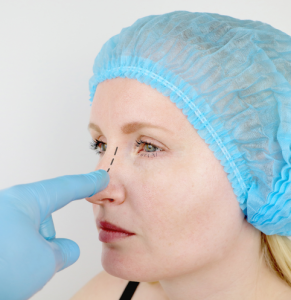
Robotıc Surgery
ROBOTIC SURGERY
What is Robotic Surgery?
Developed by NASA to enable a ground-based surgeon to operate on an astronaut in space, robotic surgery is a surgical technology that involves the use of a computer-aided, electronic device positioned between the surgeon and the patient. In the modern sense, robotic surgery is surgery performed remotely using a robot. Robotic surgery is an auxiliary technology; the surgeon performs surgery, using the surgical robot as an auxiliary instrument.
The Da Vinci platform is the most widely-used robotic surgery system around the world. It consists of a command console for controlling the surgical robot, surgical instruments and robotic arms, and a patient-side module where the robotic arms are positioned over the patient for operating on them. Endoscopes installed on one of the arms allow a three-dimensional view of the surgical area.
Can Any Surgeon Perform Robotic Surgery?
To be able to perform robotic surgery, a specific training and certification program must be completed for every specialty. The robotic surgery center closely watches and maintains records of any surgeries performed by surgeons, and the outcome of surgery.
How Is Robotic Surgery Used in Ear-Nose-Throat Surgery?
Robotic surgery is a fairly new technique and technology, with a history of only 10 years. It is used in surgical treatment of ear, nose and throat conditions since 2010 in Türkiye and around the world.
For Ear Nose Throat (ENT) surgery, the oral cavity is used for access without making any incision on the skin, which is why it is called “Transoral Robotic Surgery,” meaning “through the mouth.”
Transoral robotic surgery with the Da Vinci platform is performed using surgical instruments attached to the robotic arms. Surgery is conducted using a three-dimensional and 16x magnified endoscopic view of the surgical area with utmost precision using very small instruments, beyond what is possible with human hand.
Depending on the condition being surgically treated, smaller and thinner instruments are used in transoral surgery compared to other types of robotic surgery. Compared to human hand, the Da Vinci robot eliminates the risk of shaking and allows a far wider angle of movement, which enables a minimally invasive surgical operation that helps preserve healthy tissue while preventing potential harm to vascular and nervous structures.
The Da Vinci Robotic Surgery Platform is used for surgical treatment of the following Ear-Nose-Throat Conditions:
Sleep apnea syndrome and snoring
Benign and malign tumors of the tonsil
Benign and malign tumors of the tongue root
Benign and malign tumors of the nasal cavity, soft palate, cheeks and pharynx
Benign and malign laryngeal tumors, cysts and cancers.
In severe cases of sleep apnea, robotic surgery can help eliminate the need for a CPAP or BPAP for the patient.
Robotic surgery, performed by an experienced surgeon, can also be used for tongue reduction in macroglossy (excessively-large tongue).
What Are the Benefits of Robotic Surgery in ENT vs Conventional Open Surgery?
Conventional surgical treatment of ear, nose, throat and head and neck conditions involves large incisions in the neck, face and jaw. The Da Vinci robot allows performance of these surgical procedures by the transoral route, eliminating the need for a skin incision and significantly accelerating the healing period for the patient. All of these procedures allow reduced bleeding, smaller surgical scars, and a decreased risk of infection. The duration of hospital stay is reduced and patients go back to normal eating and speaking earlier.
Faster healing
Quicker return to daily routine
Absence of a surgical incision site
Reduced pain
Reduced bleeding and transfusion need
No wound infection, as there are no skin wounds from incision
Eliminated need for tracheotomy, i.e. cutting a hole in the throat.
What Are the Benefits of Robotic Surgery over Endoscopic Surgery?
The 5 mm tips of the robotic arms, which emulates a surgeon’s wrist but with a far greater range of motion, allows reaching the remotest areas to perform a surgical intervention.
The robotic tips are able to move on 7 planes with a 540 degrees range of motion, whereas endoscopic instruments are able to move on only one plane.
The robot eliminates the risk of hand-shake. In robotic surgery, the surgeon’s hands cannot shake, whereas in endoscopic surgery it may be a serious problem.
The instruments used in robotic surgery are flexible. The endoscopic instruments are rigid, and unable to bend or twist.
It is possible to suture during robotic surgery, but not in endoscopic surgery.
Robotic surgery allows a three-dimensional view, whereas endoscopic surgery enables only a two-dimensional picture.
In robotic surgery, the surgical area is magnified 16-fold. In endoscopic surgery, there is no magnification.
In endoscopy surgery, the surgeon holds the endoscope in one hand, so must use only one had for surgery. In robotic surgery, the surgeon has two free hands to use for surgery, and the hands of the patient-side surgeon also assist the surgeon during the procedure. This allows suturing during surgery, and 4 procedures to be performed concurrently on the same area. The duration of operation is reduced, and procedures which cannot be performed in endoscopic surgery are possible with robotic surgery.
How Is the Da Vinci Robot Used for Sleep Apnea Surgery?
Surgical treatment of obstructive sleep apnea syndrome is a relatively new area of use for robotic surgery. Obstructive sleep apnea involves obstruction of some segments of the upper respiratory tract while sleeping. The soft palate, tonsils and epiglottis are surgically treated using conventional methods. However, these techniques may prove inadequate in a majority of patients. In most patients with obstructive sleep apnea, there are also obstructions at the root tongue and the epiglottis, the small flap that overhangs the entrance to the larynx.
Before, it was not possible with conventional methods to reach the tongue root and epiglottis without making an incision in the neck. But with robotic surgery, it is possible to perform surgery in those areas without a neck incision. Robotic surgery allows multi-layered surgical treatment of patients with obstructive sleep apnea to remove all obstructions that have been detected. These surgeries restore comfortable sleeping without the need for using a device for patients who rely on respiratory aids, like CPAP, for sleeping.
How Is Robotic Surgery Used for Laryngeal Cancers?
Surgical treatment of laryngeal tumors is another area of use for robotic surgery. Robotic surgery can be conveniently used for the treatment of early-stage upper laryngeal and vocal cord tumors. Robotic surgery allows surgical treatment of laryngeal tumors without cutting a hole in the throat, precluding neck scars.
The patient recovers quicker, and starts speaking and swallowing earlier. Robotic surgery can be safely used for surgical treatment of early-stage laryngeal tumors.
DISCLAIMER: The articles on this site are suggestions. Consult your doctor for a definitive diagnosis. All operations mentioned on this site are carried out in fully equipped hospitals.
